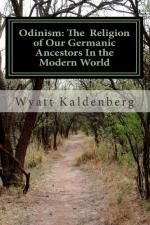|
This section contains 2,574 words (approx. 9 pages at 300 words per page) |

|
This article concentrates on the most recent phase of the history of scholarship on Germanic religion. A 1956 study by Jan de Vries provides a detailed review of work up to the middle of the twentieth century, and 1985 reviews by Joseph Harris and John Lindow cover developments up to the early 1980s.
Scholarship to the Late Nineteenth Century
Medieval scholars of Germanic religion were divided into two camps. Euhemerists such as Snorri Sturluson (1179–1241) argued that the pagan gods were men who had migrated to Sweden from Troy but who were believed by the local inhabitants to be divine. In contrast, demonists such as the editors of the sagas about King Olaf Tryggvason (r. 995–1000) held that the pagan gods were manifestations of Satan. Knowledge of the pagan religion was never lost, as is shown by the existence of two versions of Snorri's Edda that were set...
|
This section contains 2,574 words (approx. 9 pages at 300 words per page) |

|



